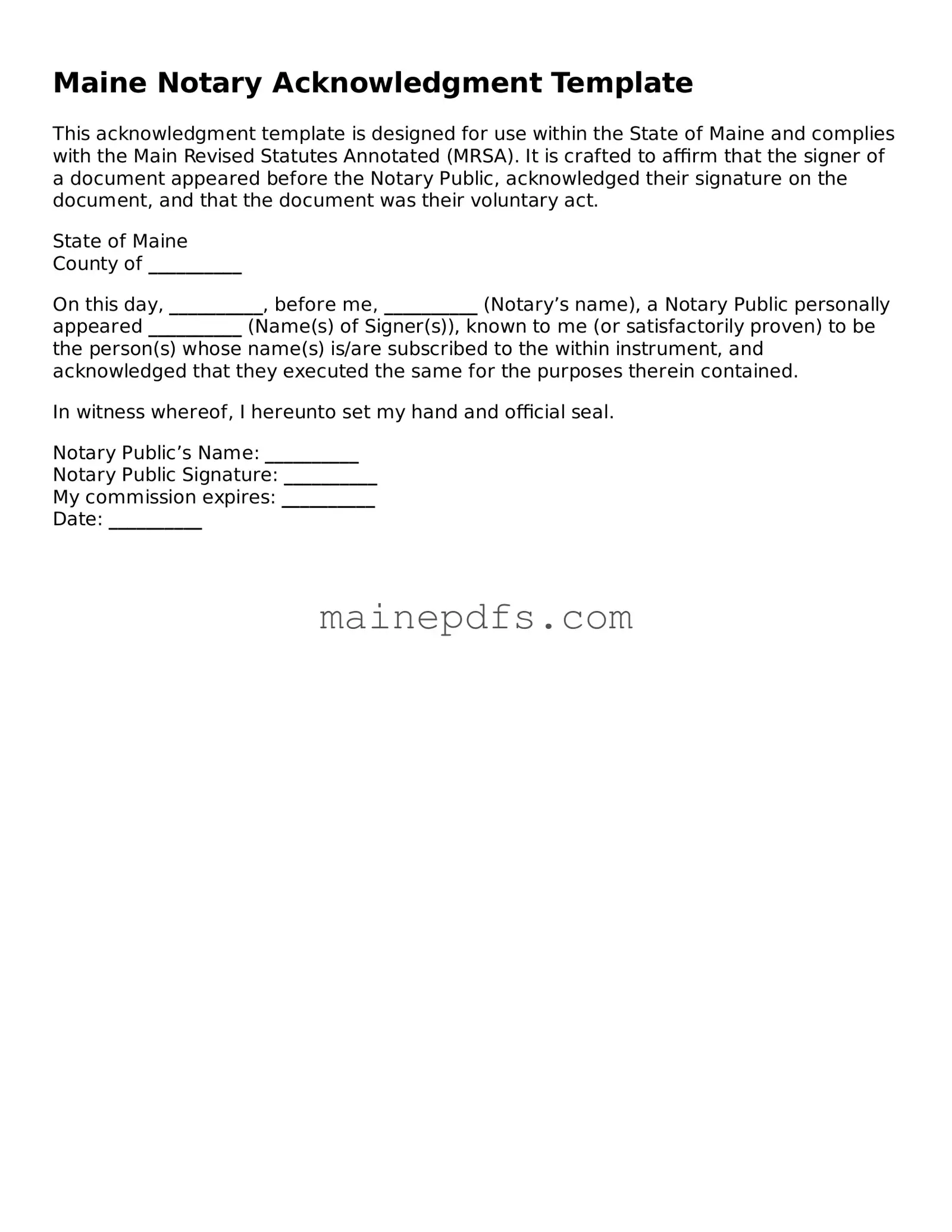The Jurat form is similar to the Maine Notary Acknowledgement form in that both are notarial acts used in legal documents. However, while the acknowledgement form validates a signer's identity and willingness to sign a document, the Jurat certifies that an oath or affirmation was made by the signer and that the document was signed in the notary's presence.
Affidavit forms share similarities with the Maine Notary Acknowledgement form as both involve sworn statements before a notary. The key difference lies in the affidavit being a written statement made under oath, while the acknowledgement form is a notary's certification of a signer's acknowledgment of their own signature on a document.
The Power of Attorney (POA) document is akin to the Maine Notary Acknowledgement form in that it often requires notarization to verify the identity of the signer and confirm their understanding and willingness to sign. Unlike the acknowledgement form, a POA grants someone else authority to act on the signer's behalf in legal matters.
Loan Signing Documents, which include various agreements and contracts for loans, typically need a notary acknowledgment, similar to the Maine Notary Acknowledgement form. This similarity is in the necessity to verify the signer's identity and ensure they are willingly entering into the agreement, providing a layer of trust and legality to financial transactions.
The Mortgage Documents, like the Maine Notary Acknowledgement form, usually require notarization for the same reasons: to validate the identity of signers and to confirm their understanding of the document's contents and implications. This helps ensure that all parties are entering into the mortgage agreement fully informed and of their own volition.
The Deed of Trust, which transfers the title of real property to a trustee as security for a loan, similarly requires a notary acknowledgment. This parallels the Maine Notary Acknowledgement form by necessitating a notary's certification to verify signers' identities and their conscious intent to enter the agreement, thereby safeguarding the legal process.
Living Wills, documents that outline a person's wishes regarding medical treatment if they become unable to communicate, often need to be acknowledged by a notary, akin to the Maine Notary Acknowledgement form. This ensures the document's authenticity and that the signer's wishes are both understood and voluntarily expressed.
A Bill of Sale is another document that, like the Maine Notary Acknowledgement form, may require notarization to confirm the identity of the signer and validate their intention to transfer ownership of an item, usually of value. This process adds a level of security and legality, ensuring the transaction is recognized as binding.
The Last Will and Testament, similar to the Maine Notary Acknowledgement form, often involves notarization to confirm the identity of the person signing and to assert that they are doing so willingly and under no duress. This ensures the will's integrity and its acceptance in legal proceedings after the person's death.
Healthcare Proxy forms assign a representative to make medical decisions on someone's behalf if they're unable to do so. These forms, akin to the Maine Notary Acknowledgement form, commonly require a notary's acknowledgment to confirm the signer's identity and voluntary decision to appoint their chosen proxy, reinforcing the document's legitimacy and the intentions behind it.
